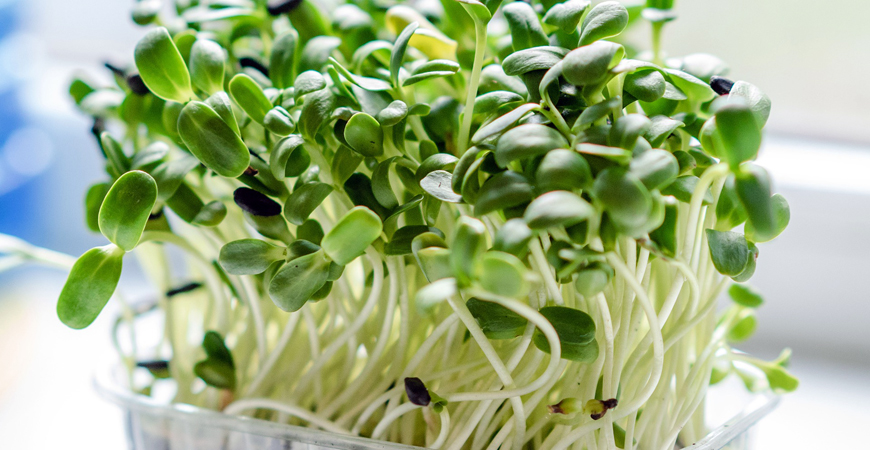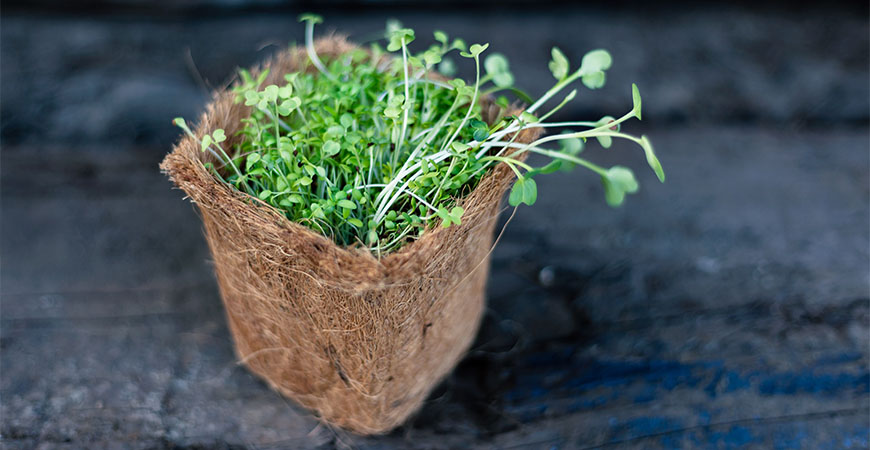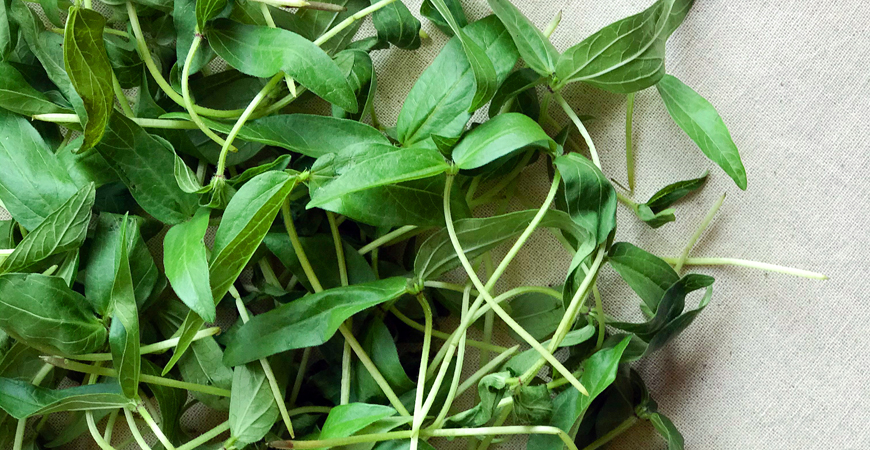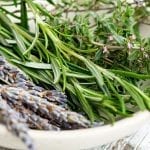
How to Grow Microgreens for Health and Nutrition
Microgreens, also called micro herbs or vegetable confetti, are young vegetable greens. Microgreens usually contain higher levels of vitamins, minerals, and antioxidants when compared to the same amount of mature greens and offer a healthy boost of nutrition at mealtime. Learn how to grow microgreens and keep your plants thriving in your indoor garden with our guide below.
What are microgreens?
Microgreens are the young seedlings of garden vegetables and herbs. The seeds are planted and harvested less than 14 days after germination. Furthermore, microgreens are harvested as seedlings – the growth stage between sprout (before the first pair of leaves) and vegetative (plants begin to grow stalks and foliage).
Microgreens are harvested when they are 1- 3 inches long. They have a strong, aromatic flavor, which makes them popular with professional chefs and home chefs. In addition, microgreens are available in a wide range of colors, textures, and flavors.
What are the health benefits of microgreens?
The nutrients in microgreens are concentrated, providing a high level of vitamins, minerals, and antioxidants in each nutritious bite. You can use microgreens in a variety of ways:
- A garnish or addition to salads, soups, omelets, or pizza
- Added to a blended juice or smoothie
- As a substitute for lettuce on a burger, sandwich, or taco
What types of microgreens are available?
Microgreens are grown from many different types of veggie and herb seeds. The most popular are:
- Dill, carrot, fennel, and celery (Apiaceae family)
- Arugula, broccoli, cauliflower, cabbage, watercress, and radish (Brassicaceae family)
- Cucumber, melon, and squash (Cucurbitaceae family)
- Endive, chicory lettuce, and radicchio (Asteraceae family)
- Leek, garlic, and onion (Amaryllidaceae family)
Microgreens may also be grown from:
- Cereals – corn, oats, rice, wheat, and barley
- Legumes – beans, lentils, and chickpeas
Are microgreens easy to grow?
Yes. Microgreens can be grown on a sunny windowsill or outdoors in a greenhouse. Also, their short plant-to-harvest period makes microgreens simple and easy to grow.
Microgreens Growing Tips
How to Plant Microgreens
- Fill a container with potting soil
- Lightly water the soil
- Sprinkle the seeds evenly on top of the soil
- Mist the seeds with water
- Cover the container with plastic or a plastic lid
- Remove the plastic to allow light to reach the tiny sprouts
- After a few days in a dark and humid environment, the seeds will germinate
- Harvest in 7-10 days
Soil Requirements
For best results, use a good quality potting soil, compost, or growing medium. You can also use a growing mat made for microgreens.
Moisture Needs
Lightly mist just-planted seeds with water. Water sprouts daily until they begin to turn green or change color.
Fertilization
Because of the short growing cycle, fertilization isn’t necessary. Apply a well-balanced, water-soluble fertilizer if you prefer. Feed tiny sprouts as soon as they poke out of the soil.
Pests and Diseases
If you grow plants in a greenhouse, pests or diseases can affect your plants.
- Pests may include aphids, thrips, or whiteflies
- Diseases may include mold or stem rot
Sun Requirements
Microgreens need plenty of sunlight or ultraviolet light to thrive – 12 to 16 hours a day is best. Consider purchasing a grow lamp if you wish to grow microgreens indoors.
Temperature Requirements
Microgreens grow best in mild temperatures above 70° F (21° C). Because the growing cycle is short, there’s no need to adjust the temperature according to the type of seeds you wish to grow.
Humidity Levels
During the germination process, the seeds will benefit from a humidity level of 50 to 80%. You can provide humidity by:
- Using a seedling tray with a lid
- Cover seeds with a moist paper towel
- Use a propagation tray

When should I harvest microgreens?
Harvest your microgreens from 7 to 10 days for the best flavor and nutrition.
Did you know? Some vegetables should not be grown as microgreens as the sprouts are poisonous. These vegetables include tomatoes, potatoes, eggplants, and peppers. It’s best to buy seeds labeled as suitable for microgreens.











